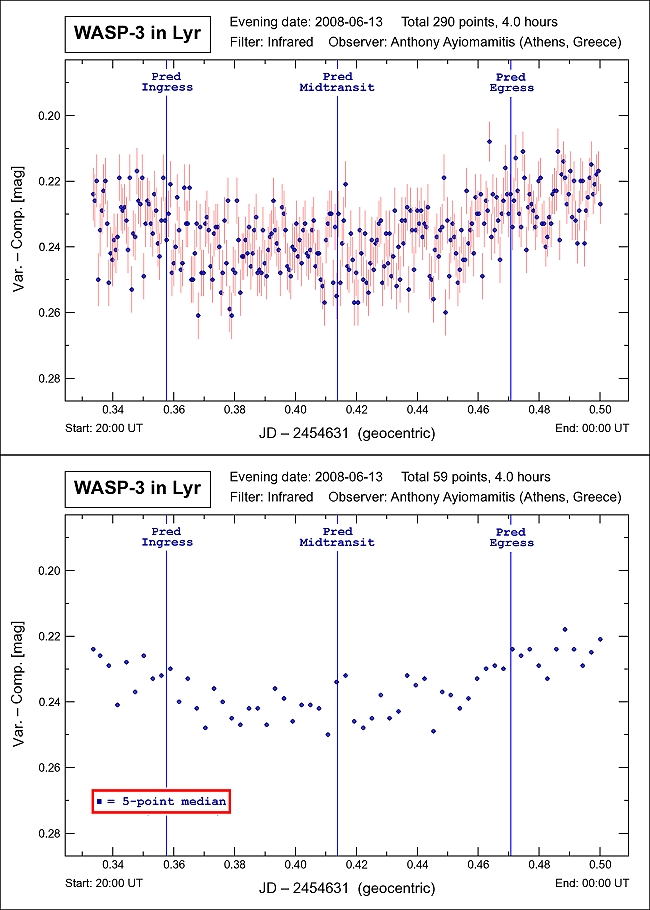
A popular method for the study of variable stars, particularly short-term variables, is by the use of the technique
known as "differential photometry". Rather than measure the (variable) magnitude of a variable star on an absolute
scale, measurements are made over time relative to one or more non-variable star(s) and these differences are then
plotted so as to study and illustrate the relative or differential change in magnitude. Due to the very large number
of variables stars, the field of differential photometry represents one of the key fields in astronomy whereby the
amateur astronomer can make a meaningful and long-lasting contribution to both science and astronomy.
More recently, the search for extrasolar planets (275 discovered so far) has identified yet another interesting
application for the practice of differential photometry whereby the minute drops in magnitude of a star hosting an
exoplanet are studied. Further details for the interested party are available
here.
Note: The light curve for exoplanet WASP-3b in Lyra depicted below is one of the latest
transitting exoplanets, having being announced in early 2008, and which represents the third discovery of the WASP (Wide
Angle Search for Planets) team. It is characterized with a mass nearly twice that of Jupiter and a very brief orbital
period of only 44.3 hours. WASP-3b requires 160 minutes to transit its parent star at a depth of 1.14%. The parent star,
GSC 2636:195, is estimated to have a mass of 1.24 solar masses, a radius equivalent to 1.31 solar radii and a temperature
of 6,400° K. The high mass observed for WASP-3b in combination with its proximity to its hot parent star make it one of
the largest and hottest exoplanets discovered so far. The light curve below is characterized with a slight increase in
brightness following egress and which has been observed elsewhere as well, thus suggesting the possible existence of a
ring system leading to forward scatter. Further details regarding WASP-3 and WASP-3b are available in the paper published
by the discovery team led by Don Pollacco et al
(click here).
Note: The C- and K-stars used for the purposes of the differential photometry measurements
depicted below were GSC 2632:1381 (mag 10.70) and GSC 2636:246 (mag 10.90) respectively.
|
Parent Star: WASP-3 GSC Catalog: GSC 2636:195 Constellation: Lyra RA / Dec: 18h 34m 31.62s / +35° 39' 41.4" Magnitude: 10.64 Distance: 727 light-years Exoplanet: WASP-3b Period: 1.846834 + 0.000002 d Transit Duration: 159.84 minutes Transit Depth: 11.4 mmag Minimum Mass: 1.76 MJup Radius: 1.31 RJup Distance: 730 light-years Pred Transit Details:
|
 |
Date: Jun 13-14, 2008 23:00:00 - 03:00:15 UT+3 Location: Athens, Greece Equipment: AP 160 f/7.5 Starfire EDF AP 1200GTO GEM SBIG ST-2000XM SBIG CFW-10 Baader IR Pass Integrations:
Temperatures:
Software: CCDSoft V5.00.188 AIP4Win V2.2 Processing: Reduction Differential Photometry |